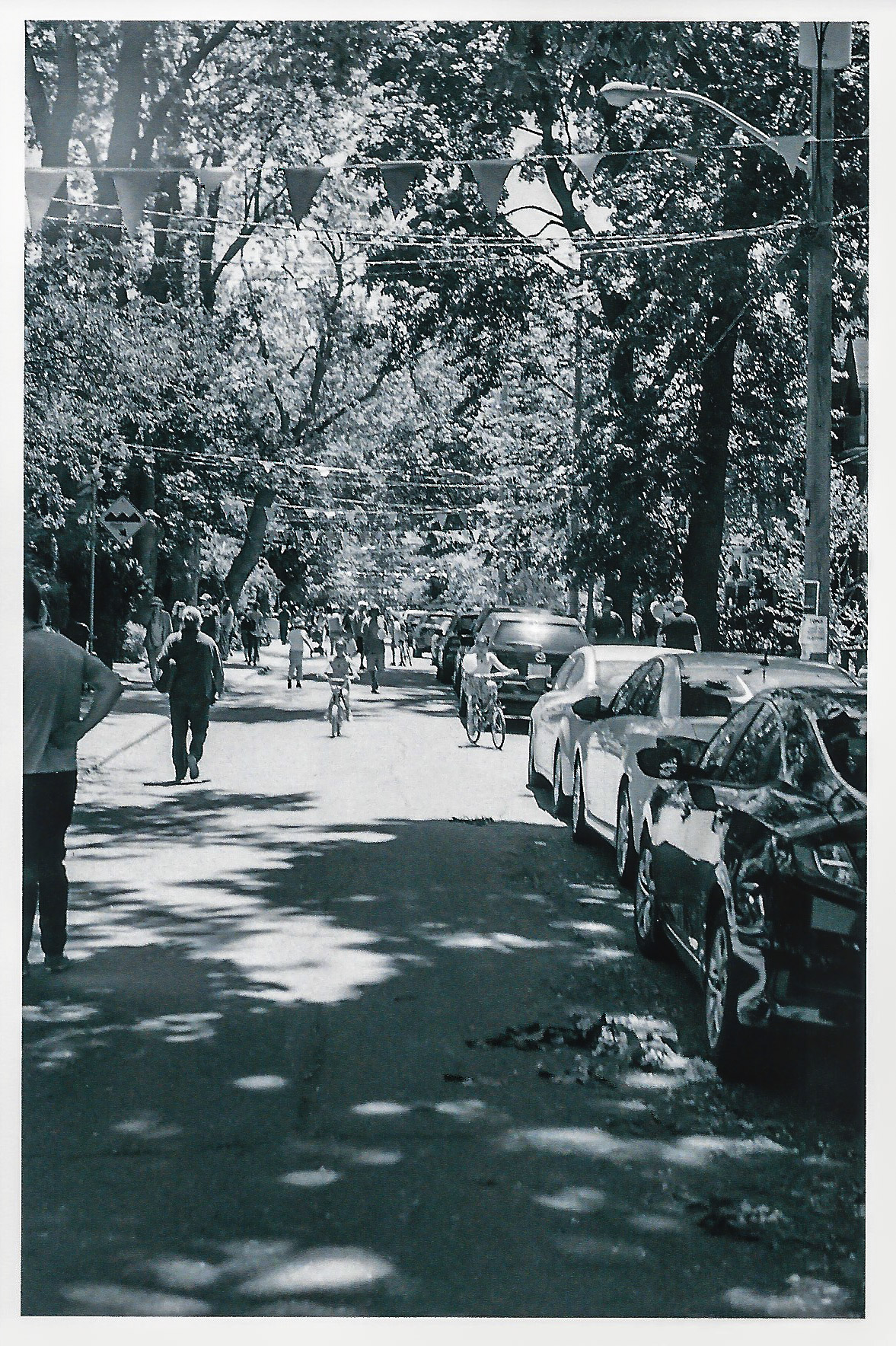Without careful inspection this may seem like a photograph one would expect to find stored away in an old photo album that hasn’t been touched in years. The flag streamers that line the telephone poles, the crowd filing down the street, as well as the two young children pedaling their way toward the camera all allude to a community gathering, similar to those commonly portrayed in films set in the 1940’s-50’s. This, however, is not a traditional neighborhood block party from the past.
The modern cars that line the right side of the residential street are the greatest hint that pulls us away from the nostalgic conceptions this film photograph provokes. This shot was taken in the city of Toronto, Canada this past summer of 2017 in the neighborhood of Parkdale, where I resided for three months. Depending on whom I talked to during my stay, reactions to my choice of living in this area varied greatly. Parkdale has undergone many transitions throughout its recent history. Once thriving as an upper-middle class residential area, Parkdale began its deterioration during the economic decline of World War II, followed by an expansion of the Gardiner Expressway in 1954, leading to a densification of the area, which was later regulated. Further down the line, a de-institutionalization of the Queen Street Mental Hospital provoked an attempted integration of many long-term patients into the community, but lack of community supports has left many of these individuals in poverty. The varied housing arrangements of Parkdale, including boarding houses and high-rises, continue to attract a large diversity of citizens including immigrants and refugees. Unsurprisingly, reactions of my lodgment in this area was not uniform like the neighborhood itself; depending on which street you find yourself, the living conditions, and status of the residents vary enormously. Most recently, and predictably, this low-income area is being infiltrated by the middle-class and their cultural interests. Gentrification (Glass, 1984) marks the new transition Parkdale is facing, once again adding to the already varied climate of the community.
The street captured in this photo is Cowan Street. Tucked beyond the trees we see in the photo lie several Victorian mansions on either side. Although some of these historic homes have been converted to multi-unit dwellings, most remain intact, marking one of the higher-income areas within the eclectic community. The gathering viewed in the picture is what the neighborhood calls “Cowan-Nation.” As mentioned above, this is not the expected community function attempting to create social cohesion in a diversified urban community (Durkheim, 1933; Writh, 19380). Rather this community event is one centered on excess accumulation. “Cowan-Nation” is a street-wide yard sale, where residents of these old-style mansions lay their now useless goods out for others to purchase. The irony of these “festivities” must not go unacknowledged. Where the celebratory excess of some residents are being used as a form of community recreation, this is confronted by the real need and disparity of other residents of the same community who are attending this event. It is not often that such large socio-economic gaps are so closely observable in cities. This is not, however, true for the community of Parkdale and can be observed readily through “Cowan-Nation." The history of this community demands that the viewer contemplate the stories of the people captured in this moment. What has brought each individual to Parkdale? Do they find themselves at “Cowan-Nation” out of need, excess, or enjoyment?
Further inspection past the stylistic deceptions of this photograph allows for a deeper understanding of this street fair and the individuals seen. As sociology has the power to do, its theoretical inspection into this photograph leads us to a better understanding of this gathering beyond the singular street we see ahead.

Commentary on Rachel Tanur's Works: Italian Cemetery Statue